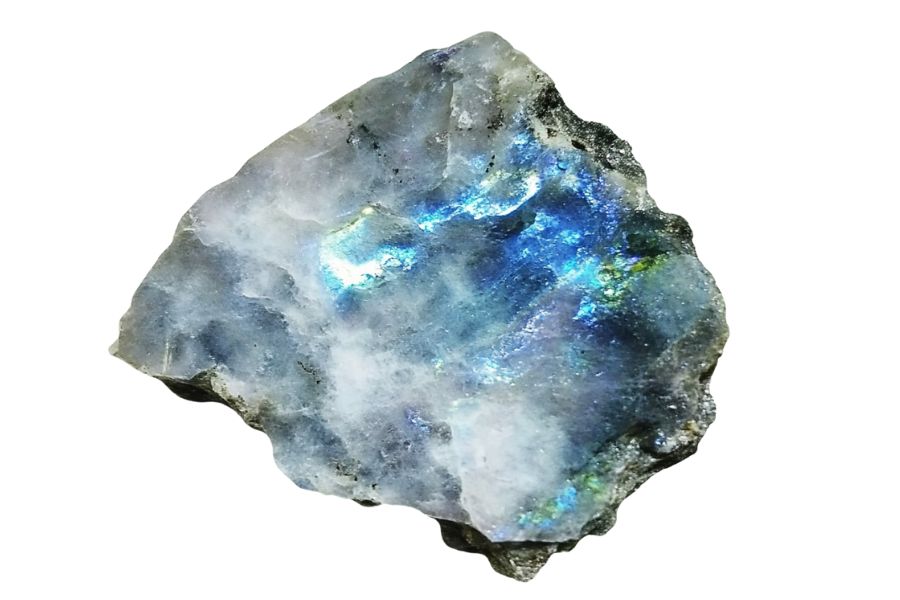You’ve probably seen labradorite’s blue-green shimmer in jewelry or rock shops. This beautiful stone catches your eye with its color flash.
Many Michigan rock collectors want to add labradorite to their collection but don’t know where to start. Walking beaches and gravel pits without guidance can waste hours with nothing to show for it.
Michigan actually has several good spots where you can pick up this flashy stone. From the shores of Lake Superior to certain quarries in the Upper Peninsula, success is possible with the right information.
We’ll guide you around Michigan’s best Labradorite locations so you can spend less time wandering and more time collecting.
How Labradorite Forms Here
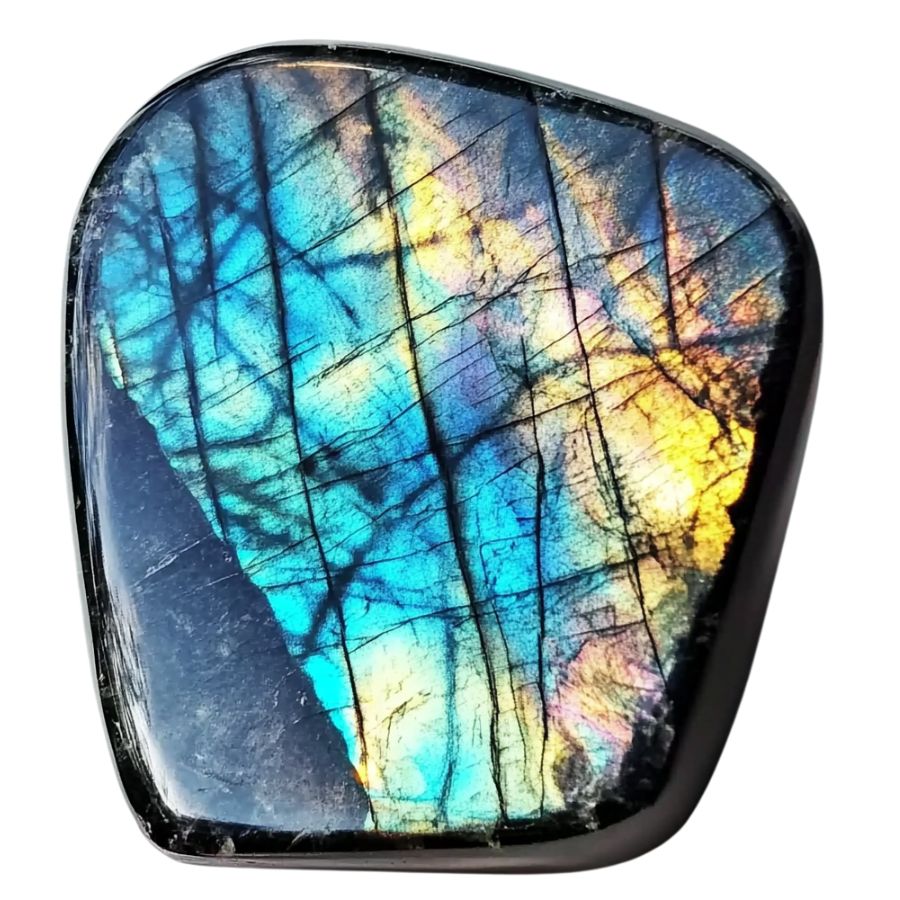
Labradorite forms deep underground when magma slowly cools and crystallizes. The process happens when different minerals separate while cooling, creating thin layers stacked on top of each other. These layers have slightly different chemical makeups, usually about 1 micron thick.
When light hits these layers, it creates that stunning blue-green flash we love, called labradorescence. The stone starts out as a mix of calcium, sodium, aluminum, and silicate minerals.
As it cools, these minerals organize themselves into this layered pattern, which happens most often in places where magma intrudes into the surrounding rock. It’s like nature’s own light show, frozen in stone.
Types of Labradorite
Labradorite comes in several distinct varieties. Each type exhibits special qualities that make it sought after by collectors.
Blue Labradorite
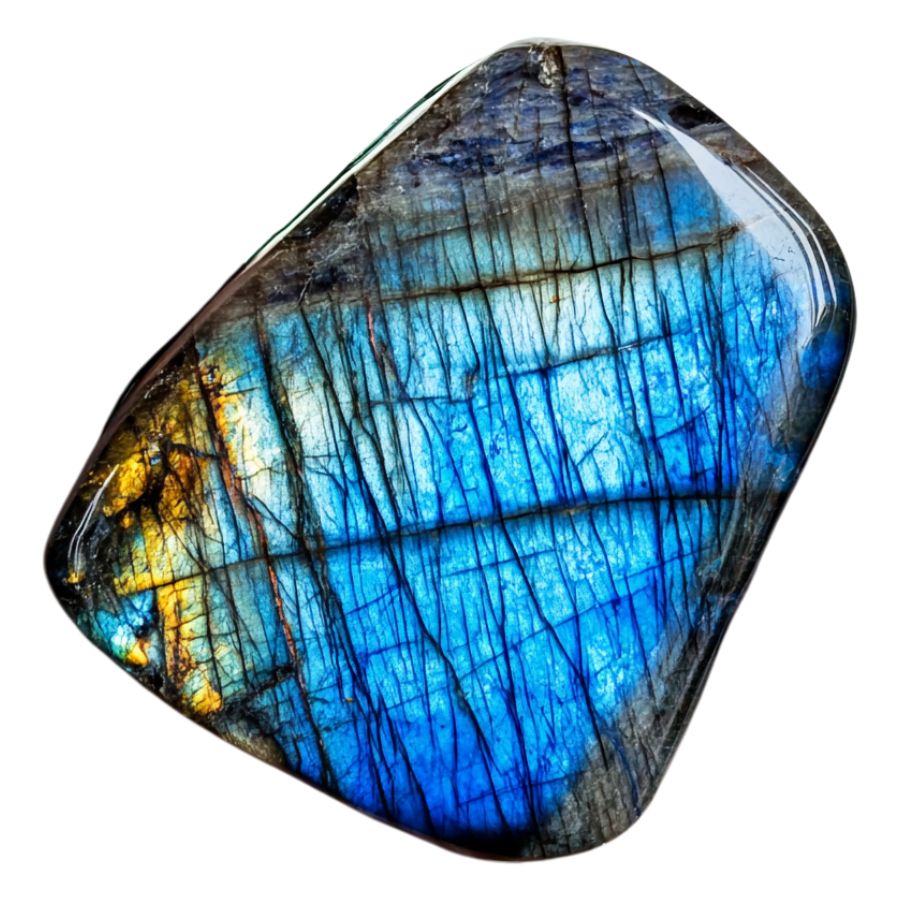
Blue Labradorite stands out for its remarkable blue iridescence against a dark gray or black background. When light hits the stone’s surface, it creates a stunning display of electric blue flashes, sometimes accompanied by hints of green or violet.
The blue flashes appear most vivid when viewing the stone from specific angles, creating an almost magical transformation as you rotate it. This effect is often compared to the ethereal beauty of the Northern Lights.
Exceptional specimens display an intense, electric blue flash that covers a large portion of the stone’s surface. Some pieces also show secondary colors like aqua or sea green, adding depth to their visual appeal. The contrast between the dark base and bright blue flashes makes each piece unique.
Golden Labradorite
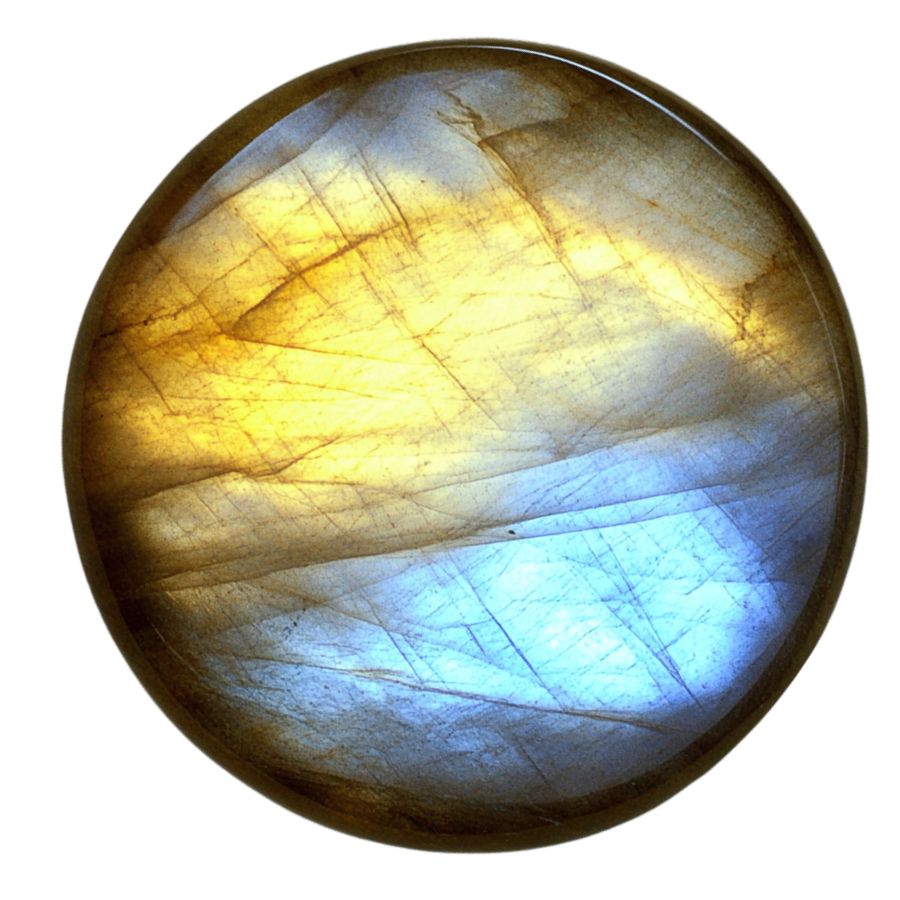
Golden Labradorite displays a mesmerizing golden-yellow sheen that sets it apart from other varieties. The stone’s surface exhibits brilliant flashes of gold and amber, creating a warm, sun-like glow that seems to emanate from within. These golden rays often appear alongside subtle hints of green or champagne colors.
What makes Golden Labradorite special is its ability to display multiple golden hues simultaneously. Some specimens show a range of colors from pale yellow to deep amber, creating a multi-dimensional effect.
The golden flash can vary in intensity and coverage, with premium specimens showing broad, bright areas of gold schiller.
Rainbow Moonstone
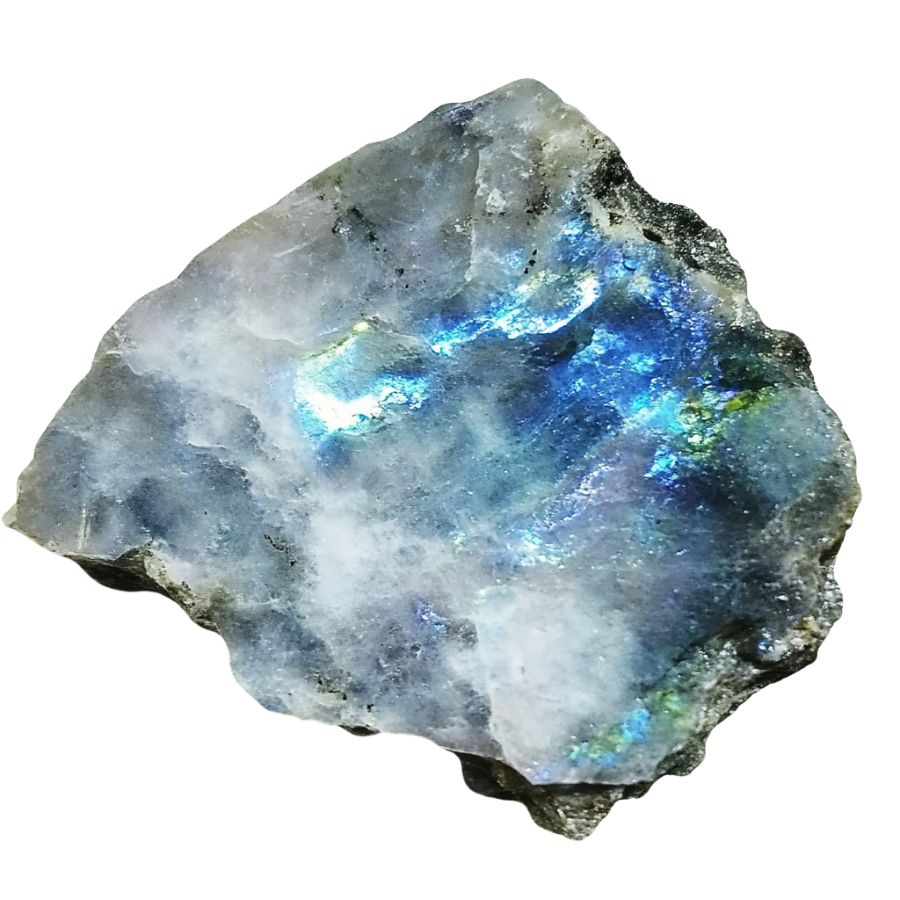
Rainbow Moonstone Labradorite exhibits a distinctive white or colorless base with an enchanting blue sheen that floats across its surface. Blue sheen is often accompanied by flashes of other colors, including pink, yellow, and green.
This stone’s most captivating feature is how its colors appear to float just beneath the surface, creating an almost three-dimensional effect. As light moves across the stone, these colors shift and change, revealing new patterns and combinations. This creates a dynamic display that seems to change with every movement.
The stone’s transparency can range from translucent to semi-transparent, with the most valued pieces showing excellent clarity beneath their shimmering surface.
Spectrolite
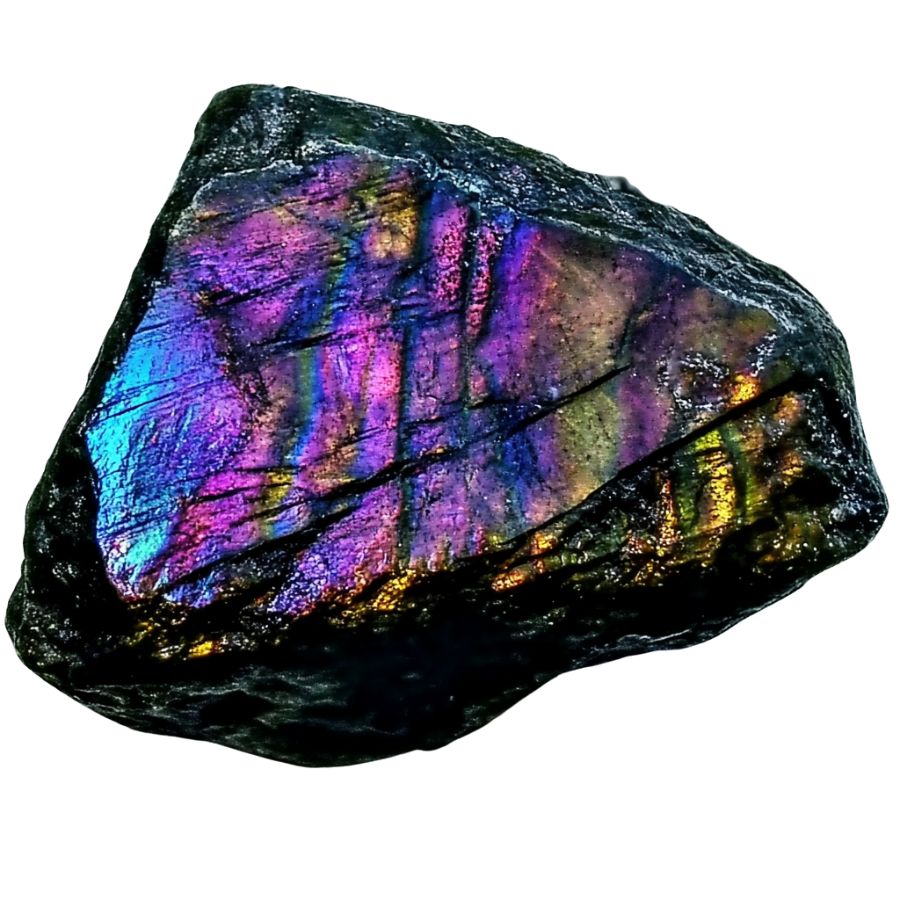
Spectrolite reigns as the most dramatic member of this stone family, with its distinctive jet-black base setting it apart from other varieties.
What makes it truly special is that premium specimens can simultaneously display the complete spectrum of colors, from deep indigo to bright orange, emerald green to royal purple, all in a single piece.
The finest specimens possess what experts call “full-face color,” meaning the vibrant display covers most of the stone’s surface rather than appearing in small patches.
This characteristic, combined with its remarkable color intensity, has earned Spectrolite its reputation as the most visually impressive variety of all similar stones.
Transparent Labradorite

Transparent Labradorite exhibits a remarkable clarity that separates it from its opaque cousins. Crystal-clear areas allow light to pass through, creating an exceptional display of blue flashes against the transparent background.
Natural specimens often show areas of both transparency and translucency. Beautiful color changes occur as you move this stone, with the transparent areas revealing subtle blue sheens that seem to float within the crystal.
Some pieces display additional colors like soft greens or pale yellows, though the blue flash remains dominant.
Remarkable clarity combines with the signature color play to create stones that appear almost liquid-like.
Andesine-Labradorite
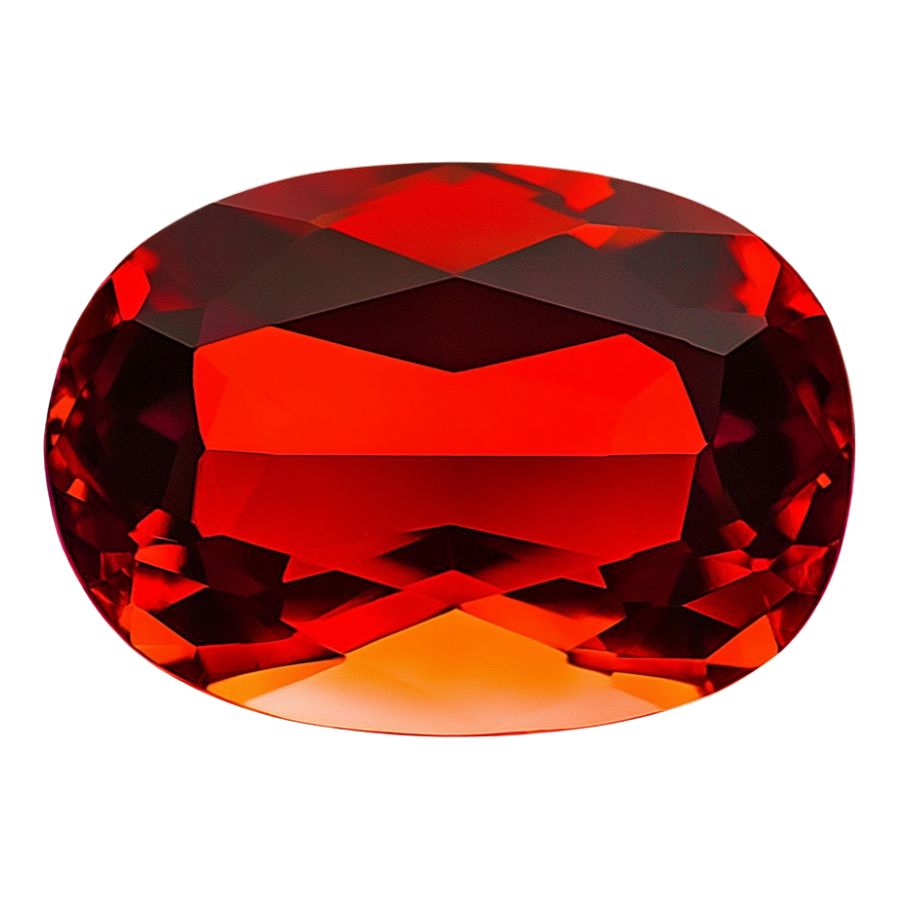
Reddish-orange hues dominate Andesine-Labradorite’s appearance, creating a warm and inviting glow. Delicate green and yellow streaks often appear throughout the stone, adding complexity to its color palette.
Metallic sparkles dance across the surface, different from the typical labradorescent effect. Fresh discoveries of this relatively new gemstone continue to reveal new color combinations.
Striking color variations appear in high-quality pieces, ranging from deep red to bright orange. Many specimens show subtle color zoning, where different hues blend together in distinct patterns.
Black Labradorite
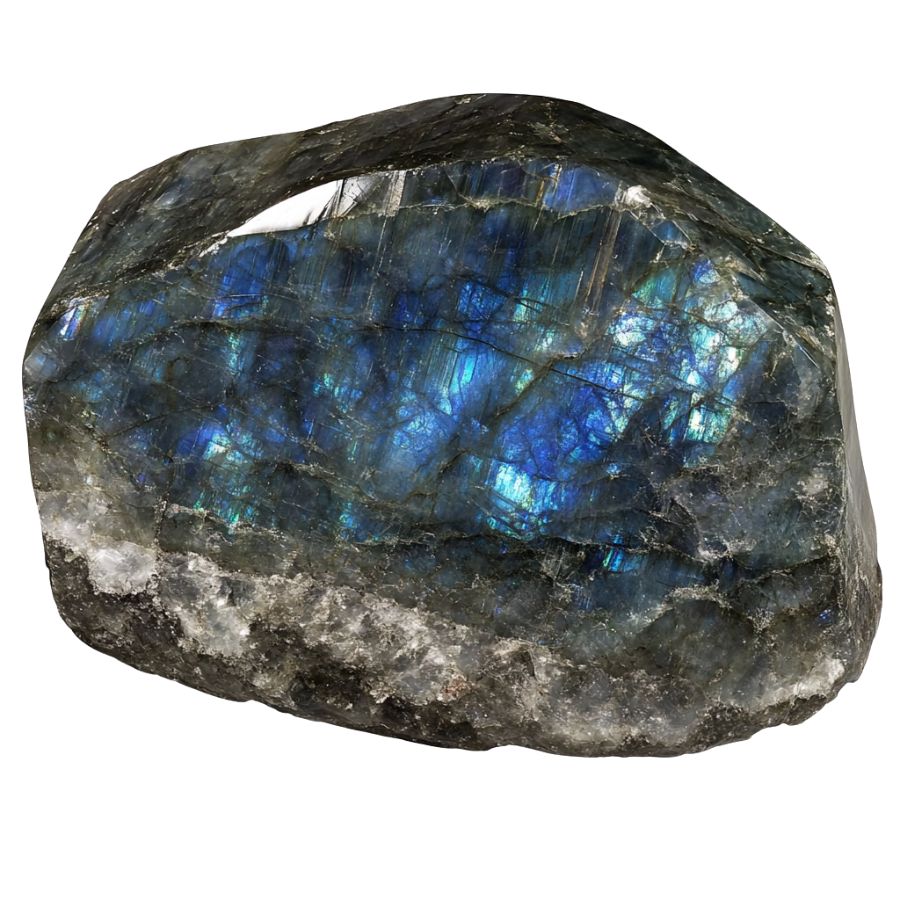
Black Labradorite presents a dramatic dark canvas that emphasizes its colorful display. Bright flashes of color stand out dramatically against the deep black background, creating stunning visual contrast.
Most specimens show multiple colors at once, creating an eye-catching display. These color displays often include electric blues, emerald greens, and golden yellows, all visible simultaneously.
Natural sunlight brings out the boldest displays, while artificial light can highlight subtle color variations. Some specimens also show interesting patterns in how the colors are distributed.
Brown Labradorite
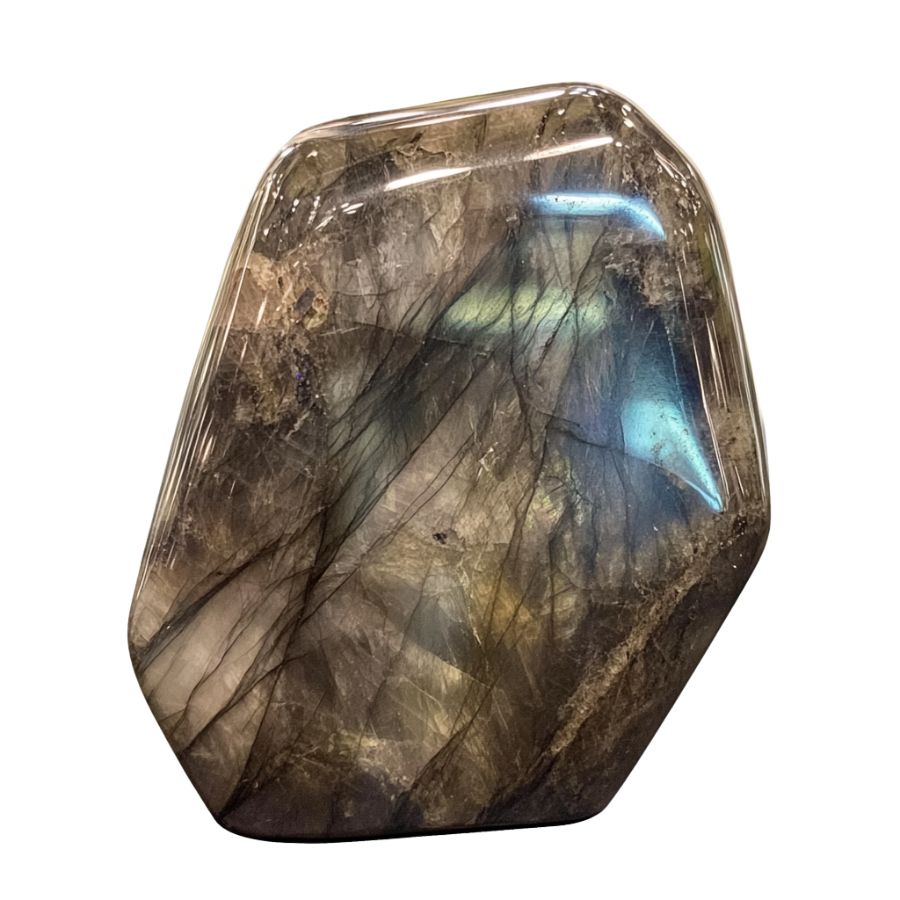
Brown Labradorite features rich earth tones ranging from deep chocolate to warm amber. Peach and orange undertones often appear throughout the stone, creating depth and dimension.
Multiple color zones create interesting patterns within each stone. These patterns can include stripes, swirls, or mottled areas that combine different brown and orange hues.
Subtle iridescence sometimes appears on the surface, adding an unexpected shimmer to the earthy colors. This effect is more subdued than in other varieties but adds an interesting dimension to the stone’s appearance.
If you want REAL results finding incredible rocks and minerals you need one of these 👇👇👇
Finding the coolest rocks in isn’t luck, it's knowing what to look for. Thousands of your fellow rock hunters are already carrying Rock Chasing field guides. Maybe it's time you joined the community.
Lightweight, mud-proof, and packed with clear photos, it’s become the go-to tool for anyone interested discovering what’s hidden under our red dirt and what they've already found.
Join them, and make your next rockhounding trip actually pay off.
What makes it different:
- 📍 Find and identify 140 incredible crystals, rocks, gemstones, minerals, and geodes across the USA
- 🚙 Field-tested across America's rivers, ranchlands, mountains, and roadcuts
- 📘 Heavy duty laminated pages resist dust, sweat, and water
- 🧠 Zero fluff — just clear visuals and straight-to-the-point info
- ⭐ Rated 4.8★ by real collectors who actually use it in the field
What Rough Labradorite Looks Like
Labradorite in its rough form can be tricky to spot, but once you know what to look for, it becomes easier. Here’s how to recognize this fascinating stone in its natural state.
Look for the Signature Flash

Raw labradorite often shows patches of its famous iridescent flash, even when unpolished. Check dark gray or black areas under direct sunlight – you might catch glimpses of blue, green, or gold shimmer.
Sometimes, you’ll need to wet the surface slightly to see this effect better. The flash isn’t always obvious but usually appears as scattered patches.
Check the Base Color and Texture

The main body should be dark gray to black, sometimes with a slight greenish tinge. The surface feels smooth but not glossy, similar to unpolished glass.
Look for a slightly bumpy texture with occasional flat surfaces. Fresh breaks will show a more uniform color than weathered surfaces.
Assess the Hardness and Breakage
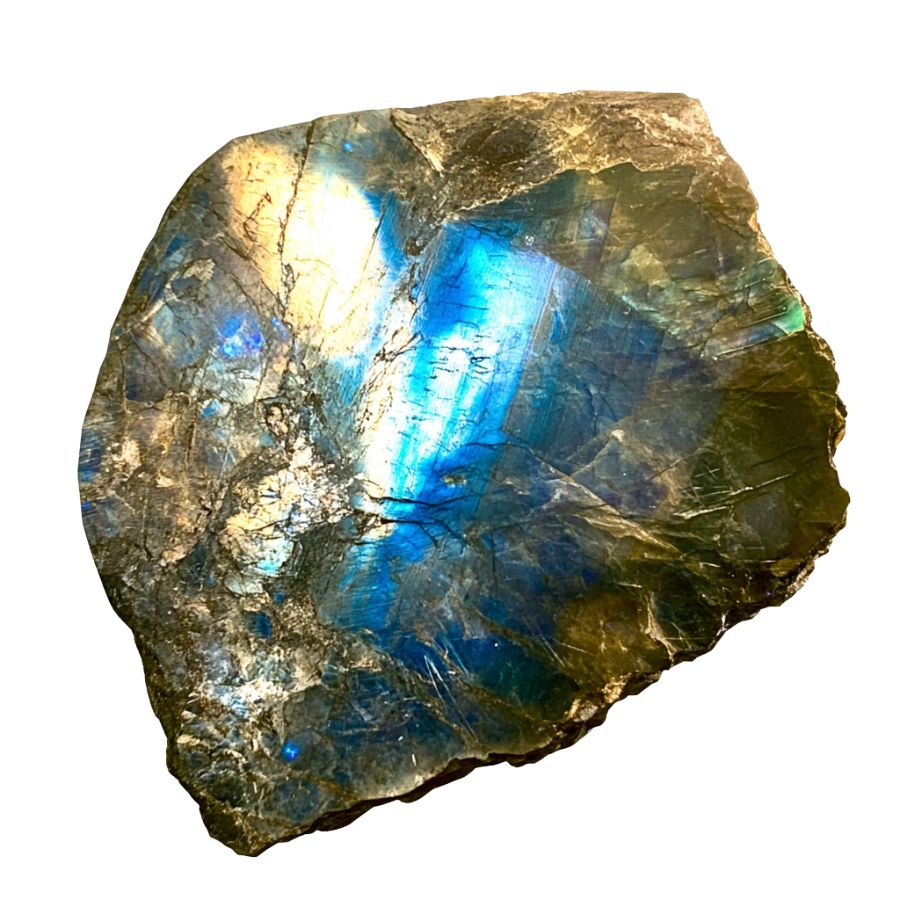
Try scratching the surface with a copper penny – it shouldn’t leave a mark. The stone often breaks with smooth, flat surfaces at distinct angles.
You’ll notice these angular breaks are pretty characteristic, unlike random rough breaks in common rocks.
Test the Translucency
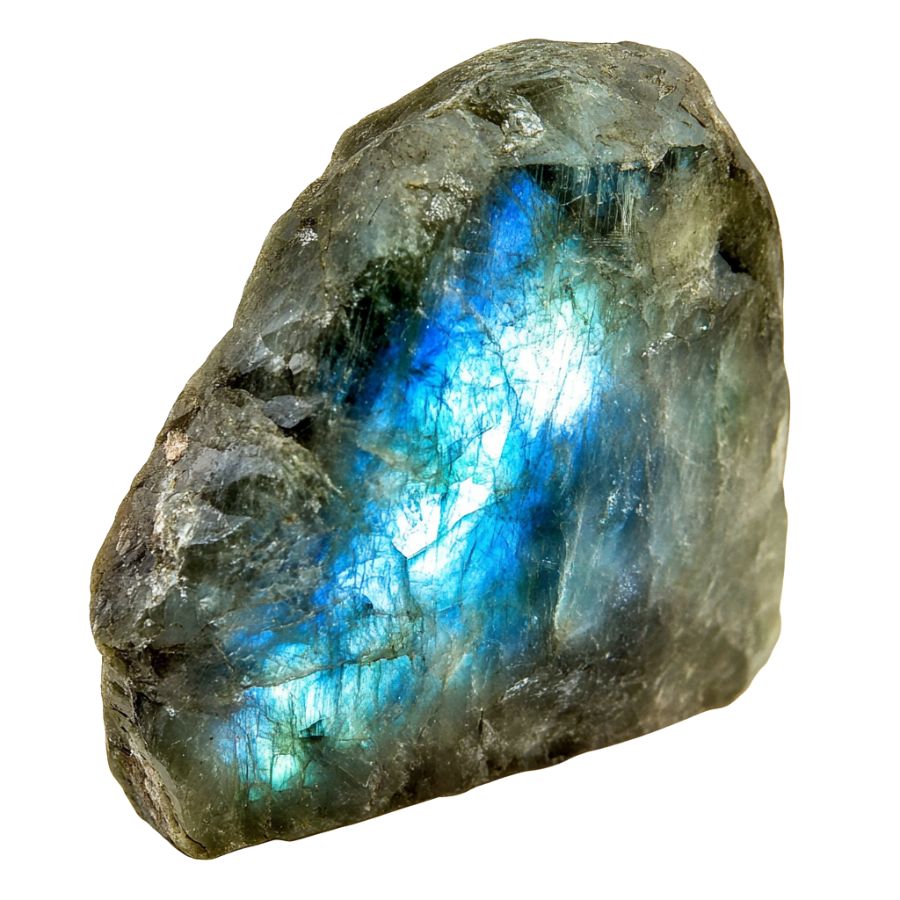
Hold a thin edge up to strong light. Raw labradorite should show some translucency, appearing slightly cloudy rather than completely opaque. The edges might look slightly whitish or gray when light passes through. Thicker pieces will appear darker and more opaque.
A Quick Request About Collecting
Always Confirm Access and Collection Rules!
Before heading out to any of the locations on our list you need to confirm access requirements and collection rules for both public and private locations directly with the location. We haven’t personally verified every location and the access requirements and collection rules often change without notice.
Many of the locations we mention will not allow collecting but are still great places for those who love to find beautiful rocks and minerals in the wild without keeping them. We also can’t guarantee you will find anything in these locations since they are constantly changing.
Always get updated information directly from the source ahead of time to ensure responsible rockhounding. If you want even more current options it’s always a good idea to contact local rock and mineral clubs and groups
Tips on Where to Look
Labradorite isn’t super common in everyday places, but with some smart searching, you can find it. Here’s where you should look:
Metamorphic Rock Formations
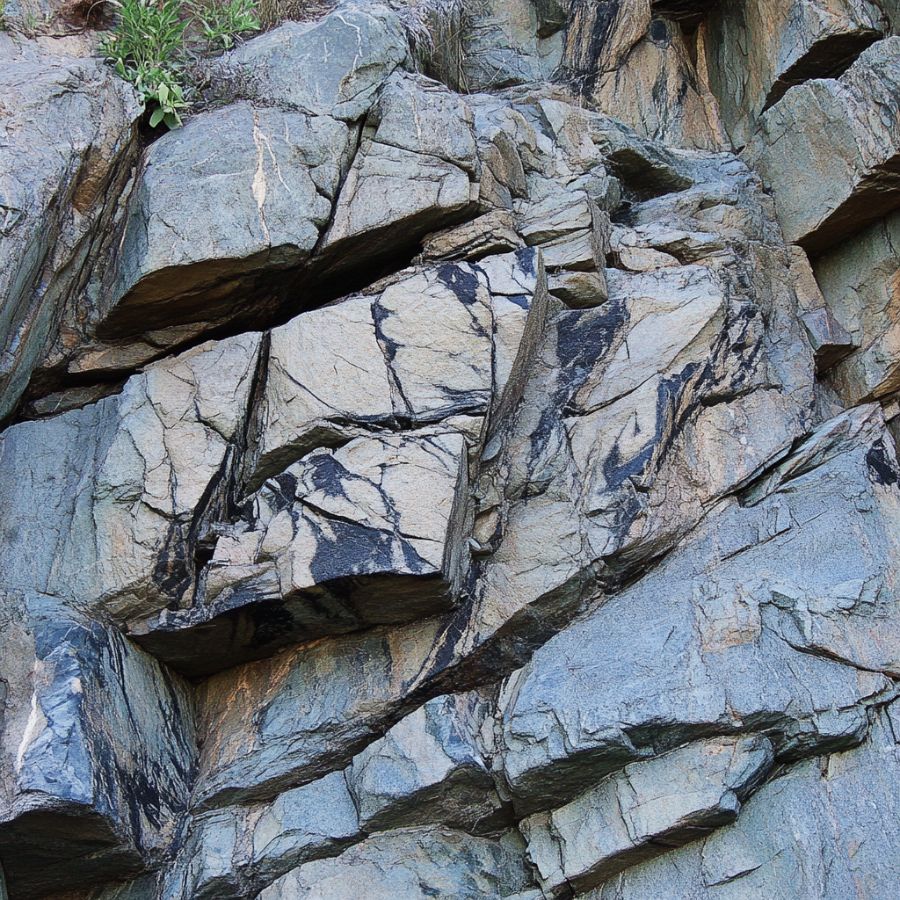
Look for dark-colored rock outcrops. Spot areas with lots of feldspar minerals. Check exposed cliff faces. Sometimes, when the sun hits just right, you might catch that signature blue flash from larger formations that’s a dead giveaway for labradorite presence.
Glacial Deposits
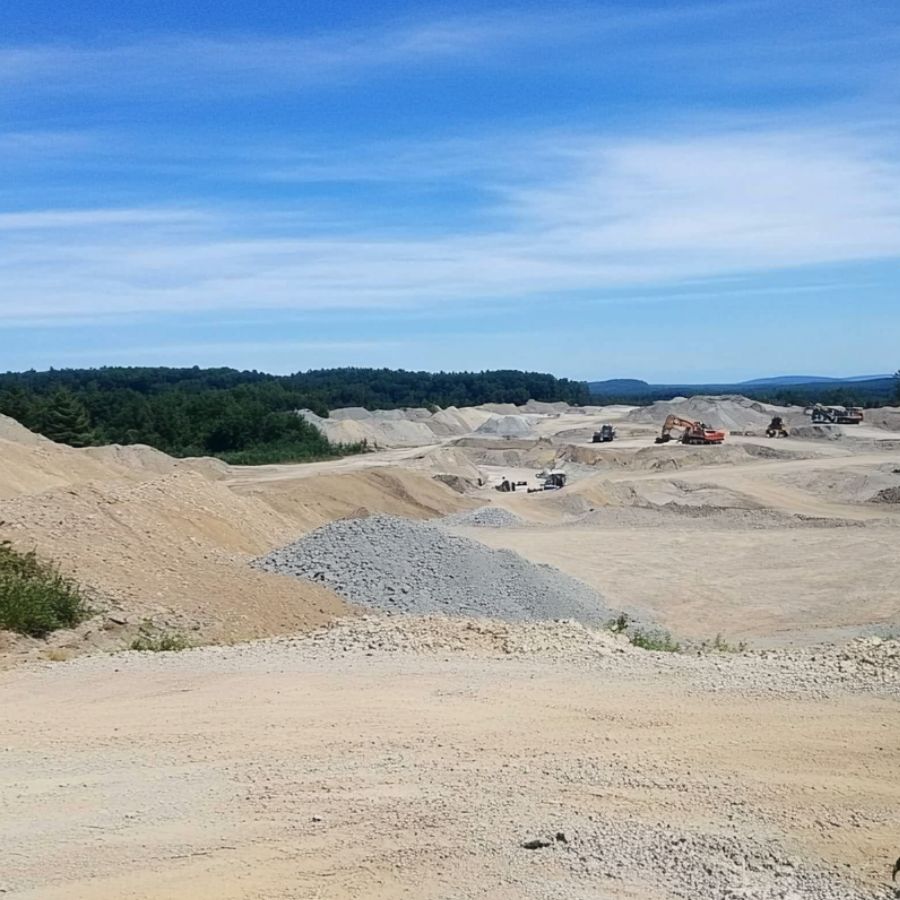
Search river beds after glacial deposits. Check gravel pits near old glacial paths. Look for smooth, dark gray stones mixed with other rocks. These deposits often contain chunks of labradorite that have broken off from larger formations and been carried downstream over thousands of years.
Mining Tailings
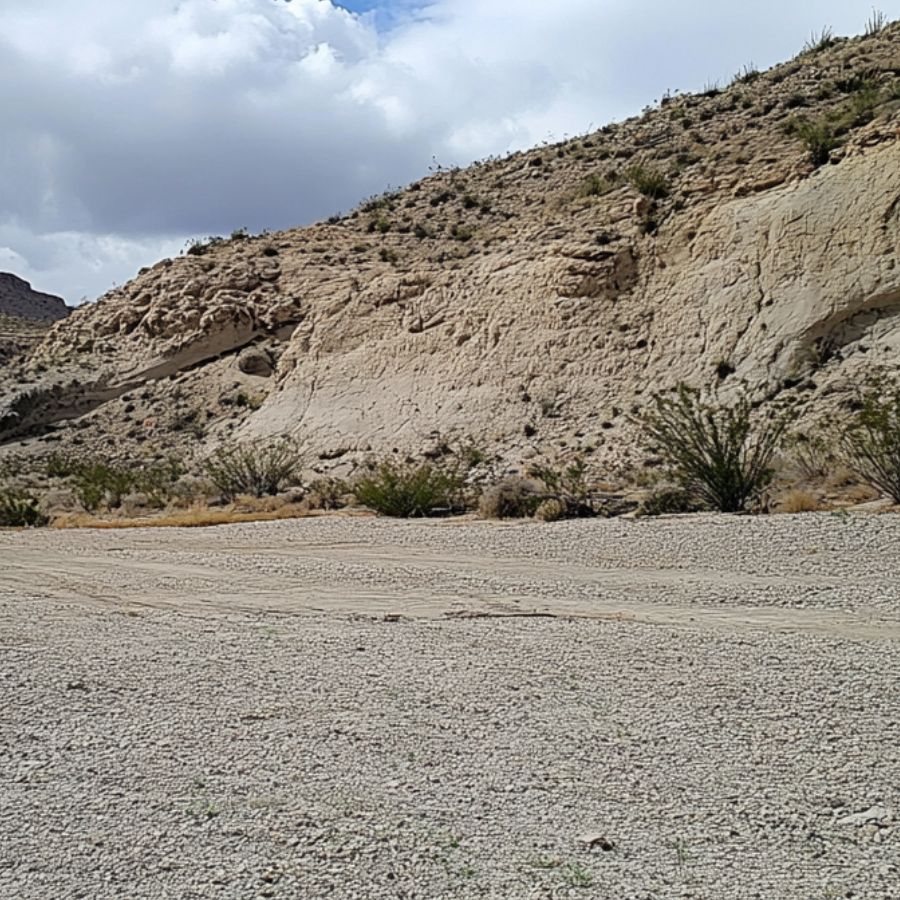
Visit abandoned feldspar mines. Check mine dump areas. Dig through tailings piles. Look for flat, shiny surfaces. The waste rock from old mining operations often contains overlooked pieces of labradorite that weren’t considered valuable during active mining periods but are perfect for collectors.
Stream Beds
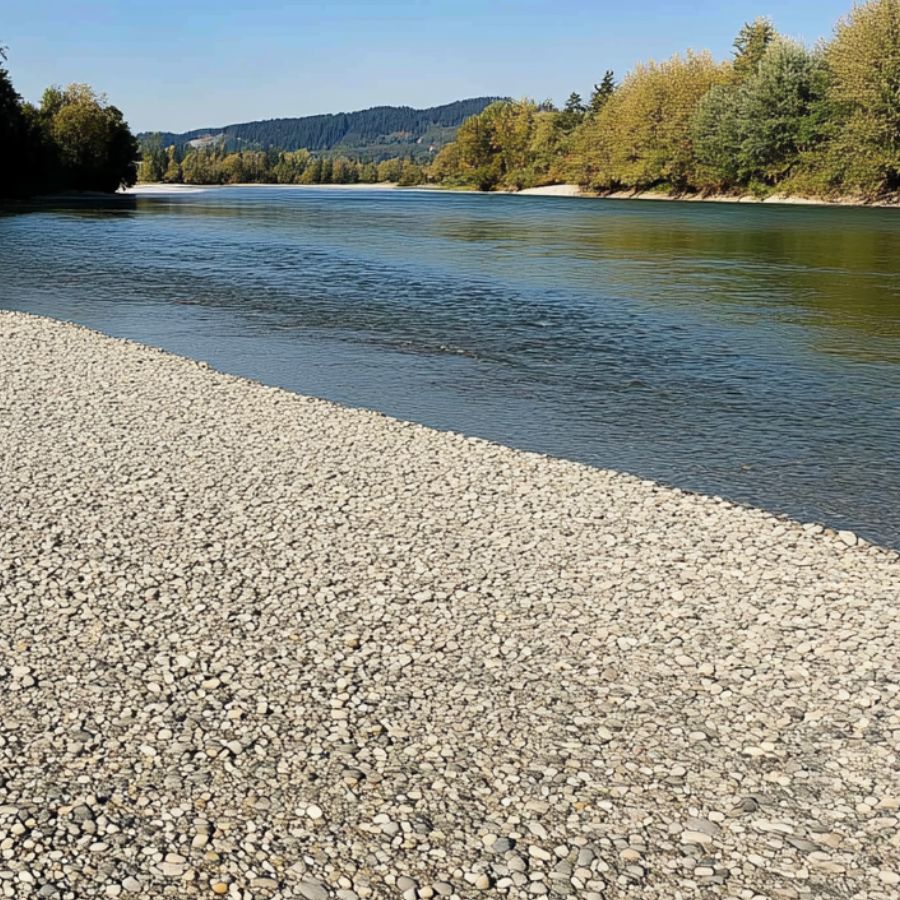
Search clear-water streams. Look under water-worn rocks. Check gravel bars after rain. Spot dark, plate-like stones. The constant water movement often exposes and polishes these stones, making them easier to identify when wet.
Some Great Places To Start
Here are some of the better places in the state to start looking for Labradorite:
Always Confirm Access and Collection Rules!
Before heading out to any of the locations on our list you need to confirm access requirements and collection rules for both public and private locations directly with the location. We haven’t personally verified every location and the access requirements and collection rules often change without notice.
Many of the locations we mention will not allow collecting but are still great places for those who love to find beautiful rocks and minerals in the wild without keeping them. We also can’t guarantee you will find anything in these locations since they are constantly changing.
Always get updated information directly from the source ahead of time to ensure responsible rockhounding. If you want even more current options it’s always a good idea to contact local rock and mineral clubs and groups
Republic Area

The Republic Area is located in western Marquette County in Michigan’s Upper Peninsula, about 34 miles west-southwest of Marquette City. This former mining community is known for its rich geological history centered around the Republic Mine, once an active iron ore operation.
Labradorite has been found in this area, specifically as large gray crystals within gabbro porphyry rocks near Republic.
Many rockhounds search the old mine dumps and ore piles for mineral specimens. These piles contain unprocessed materials that often yield exciting finds. Besides labradorite, collectors might discover quartz, hematite, magnetite, and occasionally garnet schist.
Local geology was shaped by the Penokean orogeny, an ancient mountain-building event that created the perfect conditions for diverse mineral formation in this part of Michigan’s Upper Peninsula.
Iron Mountain
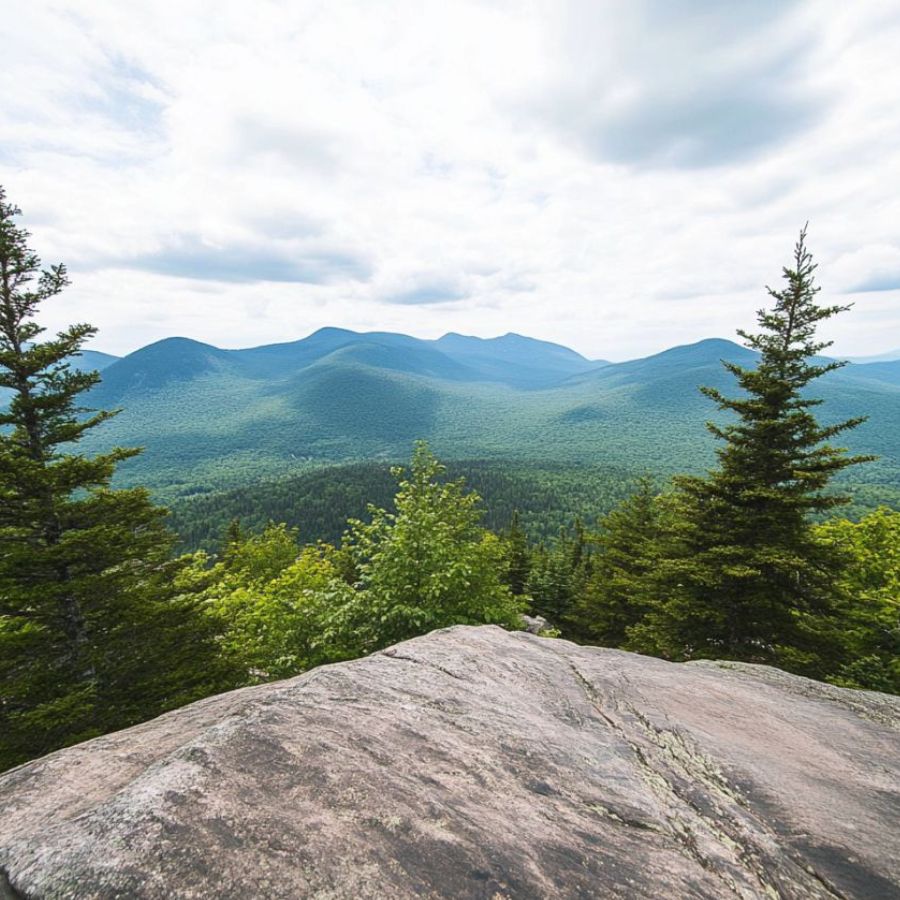
Iron Mountain is a city located in Dickinson County. This area is famous for its rich iron ore deposits, which gave the city its name. The natural beauty of Iron Mountain includes rolling hills and thick forests that hide many mineral treasures.
The area sits within the Menominee iron-bearing district, home to various metamorphic and igneous rocks. Many different minerals can be found here because of this unique geological history.
You should look for exposed igneous rocks and pegmatites around Iron Mountain, as these formations often contain labradorite. Old mining sites can be particularly rewarding places to search. ‘
The abandoned quarries and rock outcrops throughout the region may yield this beautiful blue-gray gemstone with its characteristic play of colors. Local rock shops in Iron Mountain can also provide tips on specific collection spots nearby.
Keweenaw Peninsula
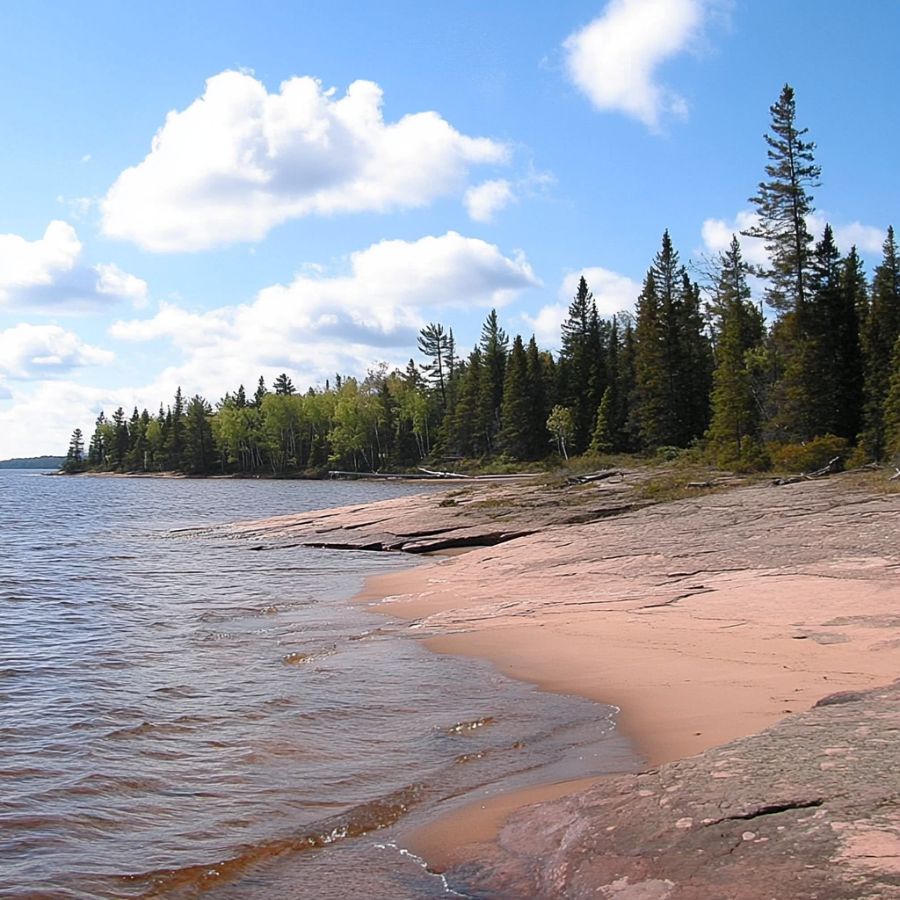
The Keweenaw Peninsula stretches into Lake Superior at Michigan’s northernmost point. This rugged area features ancient lava flows, dense forests, and rocky shores. Known as “Copper Country,” the region has a rich mining history dating back centuries.
Labradorite specimens have been discovered here, hiding among the peninsula’s volcanic rock formations.
Formed over a billion years ago, the peninsula’s geology resulted from the Midcontinent Rift System, which created massive volcanic activity. This ancient process left behind a treasure trove of minerals beyond just the famous copper deposits.
You might find labradorite in areas with exposed basaltic lava flows. Old mine dumps and rock piles around historic mining sites like Cliff Mine can yield good specimens. You should also search the beaches after storms, when wave action uncovers new rocks.
Crystal Falls
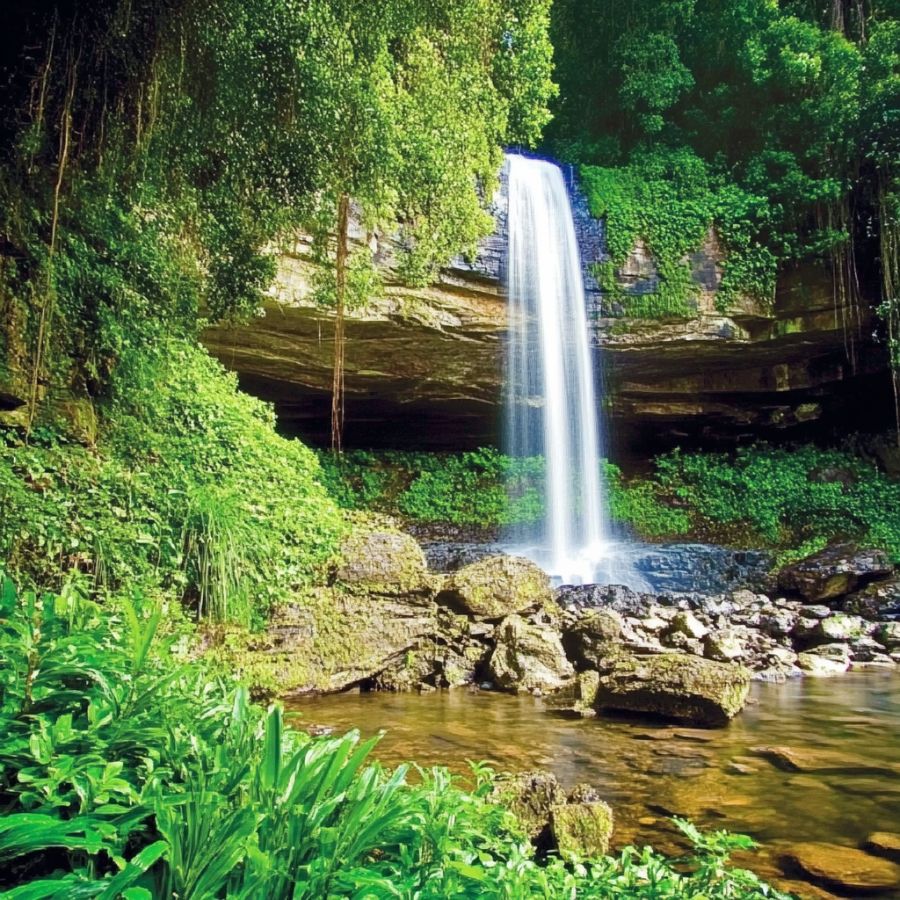
Crystal Falls is a small city in Iron County. This area sits near the Paint River and features rolling hills covered with thick forests.
The area holds special geological interest because of the nearby Lake Ellen Kimberlite, a rare volcanic formation northeast of the city. This unusual site contains many indicator minerals that hint at the rich geological diversity of Crystal Falls.
You can look for Labradorite in places where igneous rocks are exposed, especially near outcrops of dark-colored rocks like gabbro and basalt. Many collectors search along river cuts and road excavations where fresh rock is exposed.
During spring, after heavy rains wash away soil, it is often the best time to spot the distinctive blue flash that makes Labradorite so prized by collectors.
Calumet Area
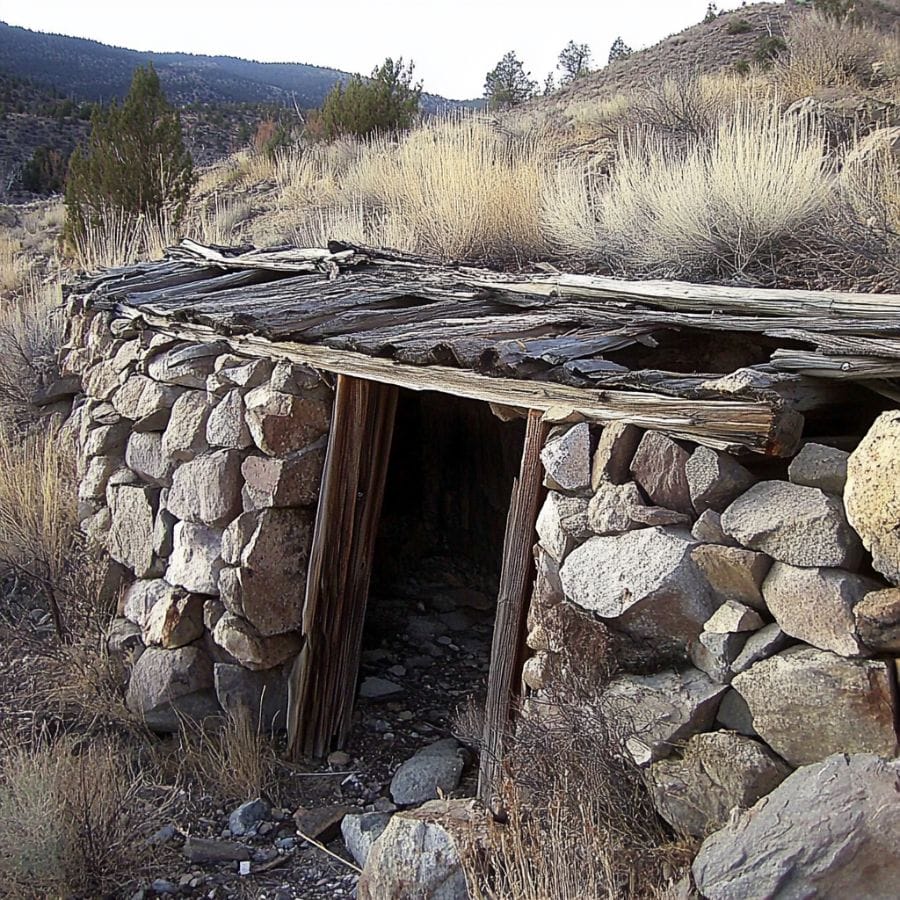
The Calumet Area sits in the Upper Peninsula of Michigan, in Houghton County. This region is famous for its rich copper mining history. Miners have discovered Labradorite in this area, making it a good spot for gemstone hunters.
Calumet is part of the Keweenaw Peninsula, known for its ancient volcanic formations. These unique rocks were formed millions of years ago when lava cooled and created mineral-rich deposits.
The area features the Calumet and Hecla Conglomerate, which contains various minerals, including copper and Labradorite.
You can find Labradorite near old mining sites and tailings piles left from past mining operations. Many collectors search around abandoned mine dumps where rocks were discarded. These piles often contain overlooked treasures.
Lake Superior’s shoreline near Calumet sometimes yields specimens washed up from underwater deposits.
Places Labradorite has been found by County
After discussing our top picks, we wanted to discuss the other places on our list. Below is a list of the additional locations along with a breakdown of each place by county.
| County | Location |
| Keweenaw | Copper Harbor |
| Keweenaw | Mohawk |
| Ontonagon | Ontonagon |
| Ontonagon | Mass City |
| Ontonagon | Rockland |
| Ontonagon | Greenland |
| Baraga | L’Anse |
| Baraga | Baraga |
| Marquette | Marquette |
| Marquette | Negaunee |
| Marquette | Ishpeming |
| Marquette | Champion |
| Marquette | Michigamme |
| Alger | Munising |
| Alger | Grand Marais |
| Schoolcraft | Manistique |
| Delta | Escanaba |
| Mackinac | St. Ignace |
| Chippewa | Drummond Island |
| Chippewa | Sault Ste. Marie |
| Chippewa | Whitefish Point |

